Solve Drag Marks in the Asphalt Mat
BY John Ball
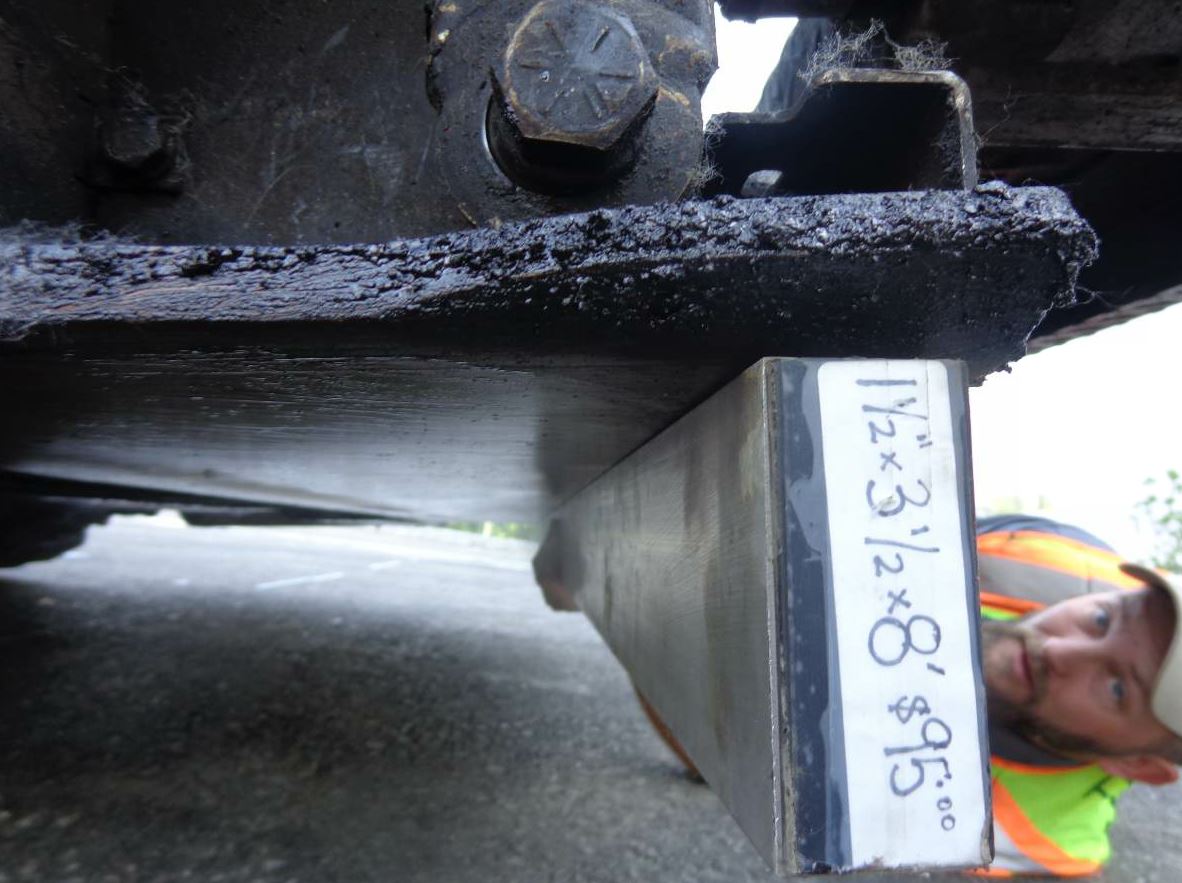
If you’re wondering why the mat has drag marks in it, turn to the screed for a possible answer.
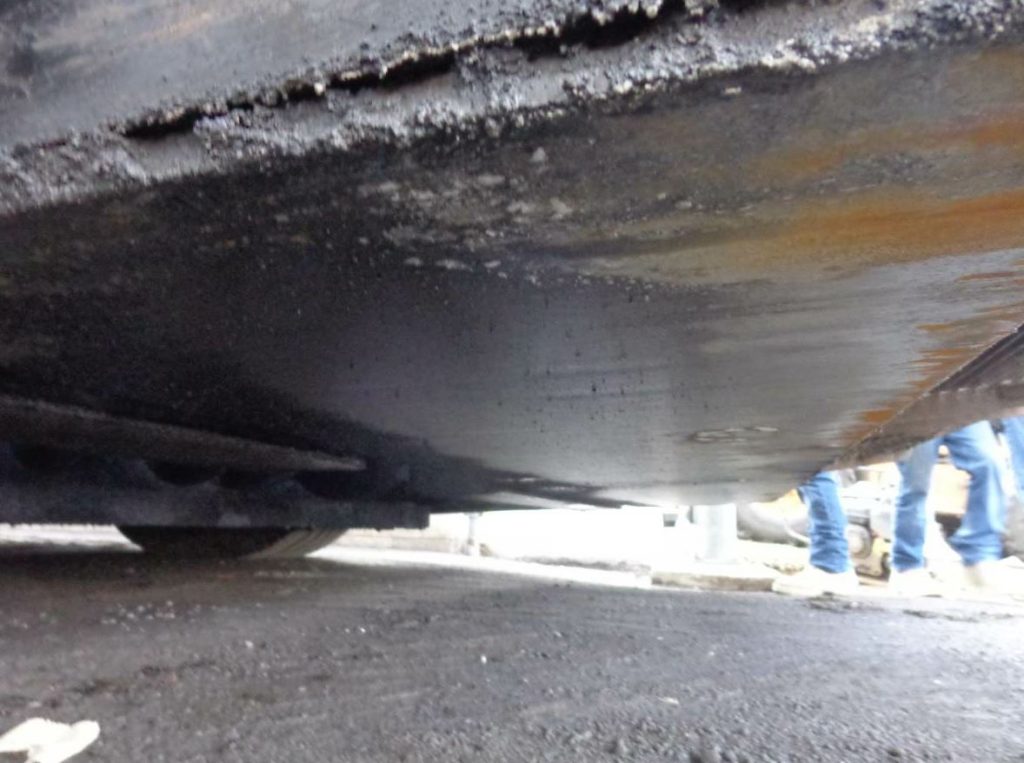
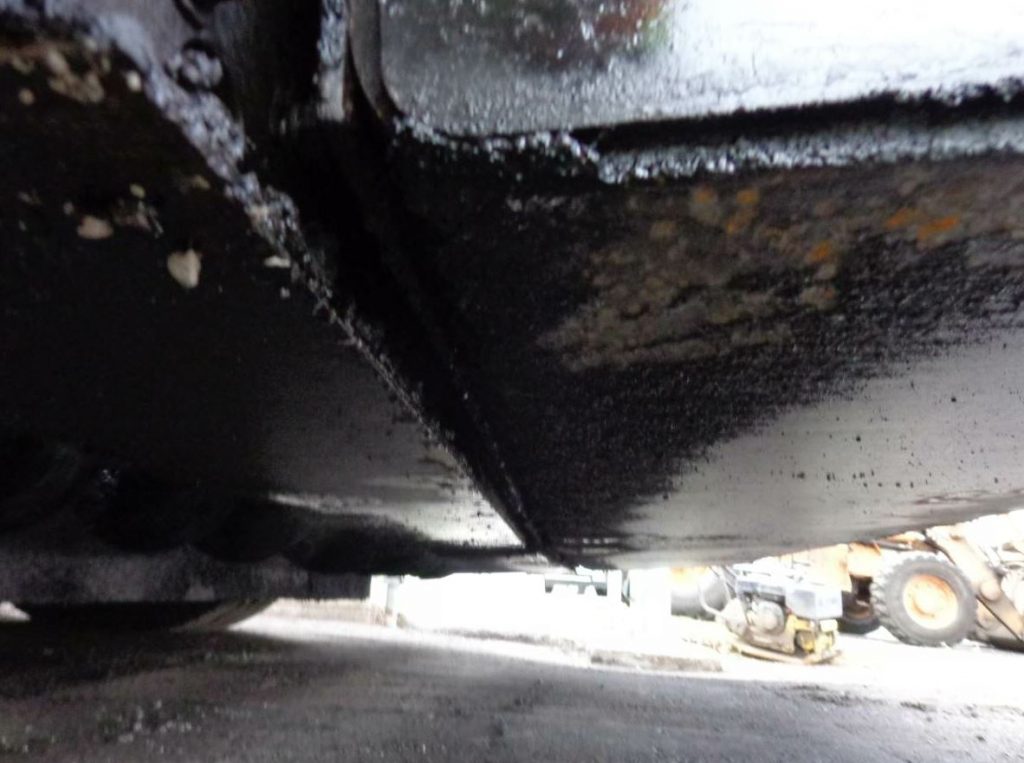
Here you can see rust on some areas of the screed plate. If you don’t use the paver every day, you can get rust under the screed where you leave it sitting against the ground. Solve that by lifting and locking the screed off the ground when storing the paver overnight.
In the picture at left, you also see an area that is shiny versus areas that have caked material and areas that are rusted. This screed doesn’t touch the mat completely. It is probably warped; you can tell by the variation in shiny versus rusted spots. The angle of attack is off because the nose is caked with asphalt. You figure out that you have a problem with the following steps:
1. Get on your hands and knees;
2. Put a metal straight edge under the screed to check the nose first;
3. Put the metal straight edge under the screed to check the tail next;
4. Next put a 4-foot level under the screed to touch the front and extendable; measure the gap between the front of the main screed and the trailing edge of the extendables. Depending on the screed manufacturer, this should be a 1/8- to 1/4-inch gap.
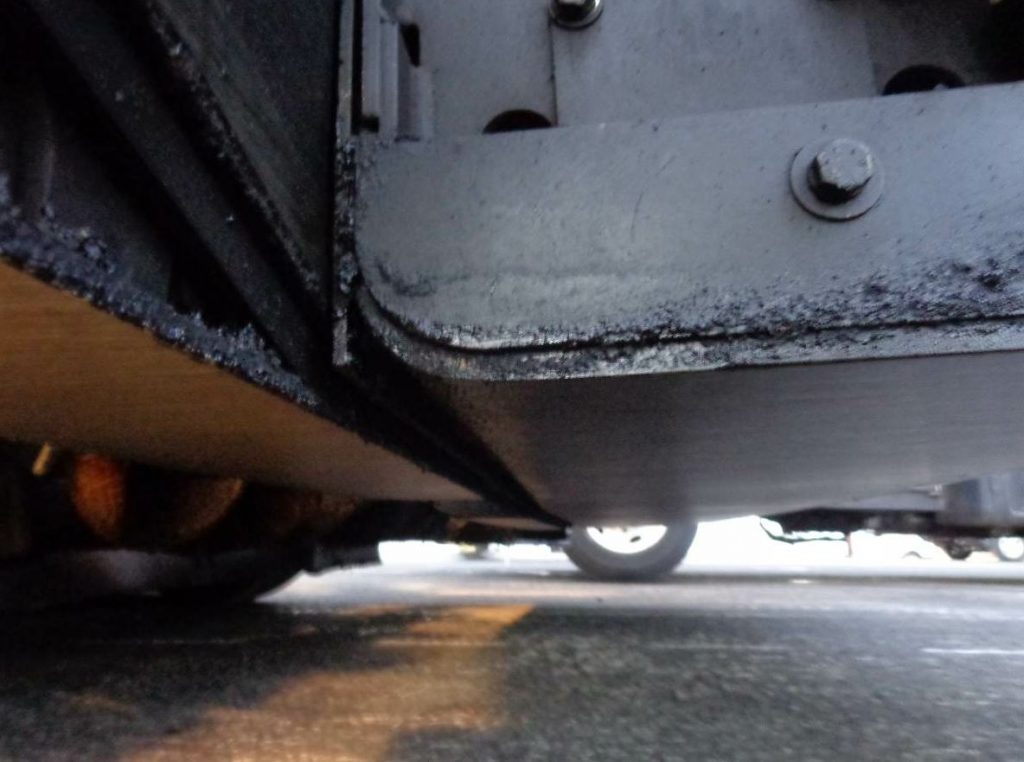
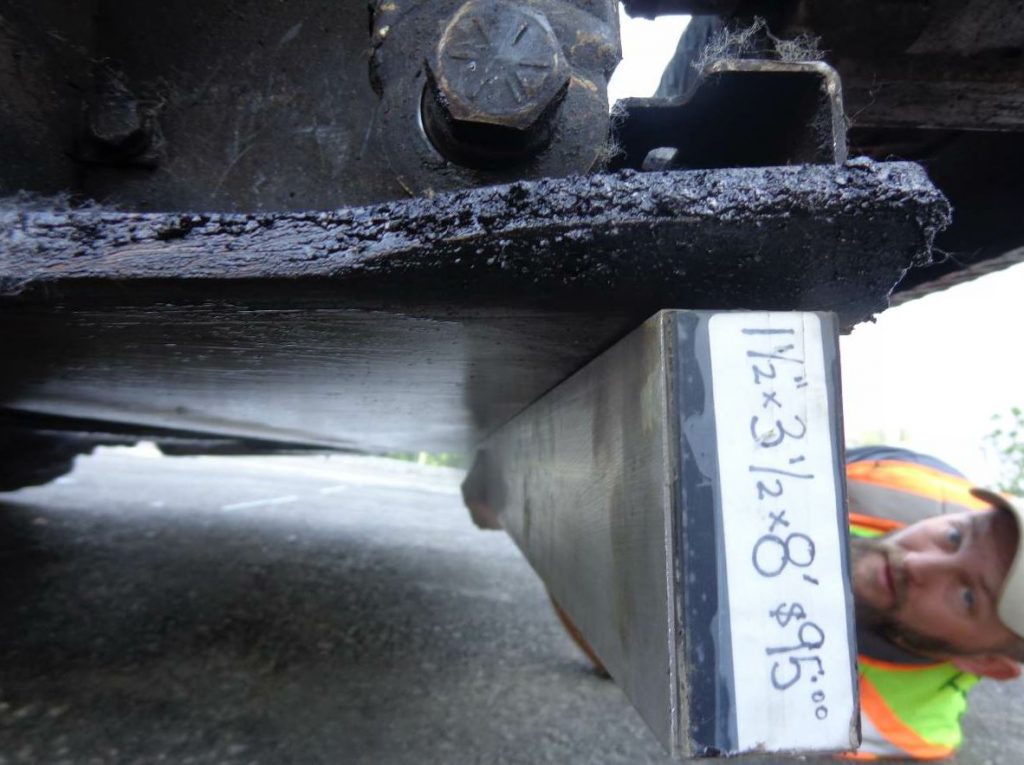
Think of the bottom of the screed like a hot iron for ironing your clothes. If the iron is clean, smooth and shiny, it’s going to do a good job of getting the wrinkles out of your shirt. If the iron has a glob of hardened gum stuck to one spot, it’s going to drag and catch, failing to iron your shirt properly. The same concept happens with the bottom of the screed.
In some cases, prevention is the cure. You want to prevent the screed from warping. Don’t run over manholes or other utility caps when paving. Watch out for obstacles and lift the screed as you travel the few inches to get past them. Also follow the advice mentioned above and lift the screed off the ground when you stop for the night. You don’t want dew and condensation making a home on the bottom of your screed plate on a regular basis.
One way to solve minor screed problems is to clean it. Lift the screed, lock it into place, and get under there with release agent, a putty knife and a rag. Clean it thoroughly to be sure it’s smooth like the surface of an iron. If you can’t get it smooth because of divots or damage, or if the plate is warped, you need to replace the plate. Keep in mind, if you’ve put 125,000 tons through the paver, you may be pushing the limits of the screed plate. Replacing it (and the extendables) will take about a day to do. You’ll need to replace the extendable screed plates at the same time, even if they’re not showing the same signs of warping.
When you take the screed plate off, take a look at the electric elements and plugs to make sure they’re in good shape, not corroded.
John Ball is the proprietor of Top Quality Paving & Training, Manchester, New Hampshire. For more information, contact him at (603) 493-1458 or tqpaving@yahoo.com.
